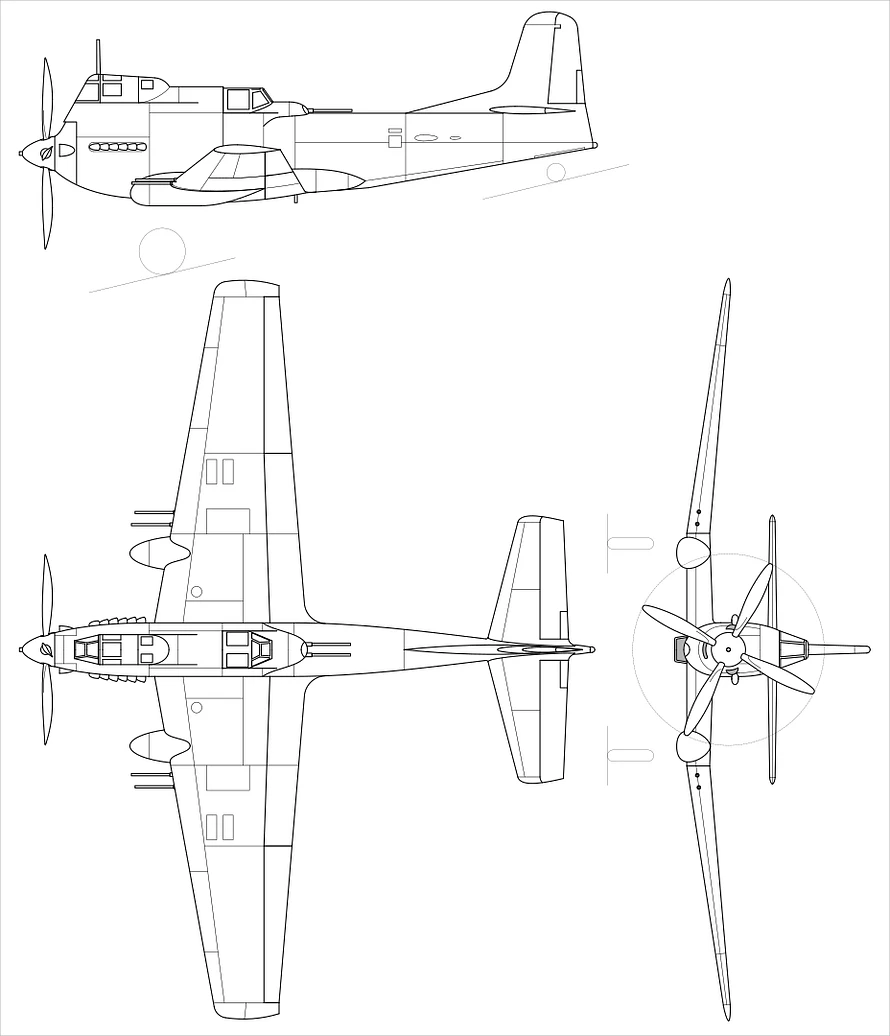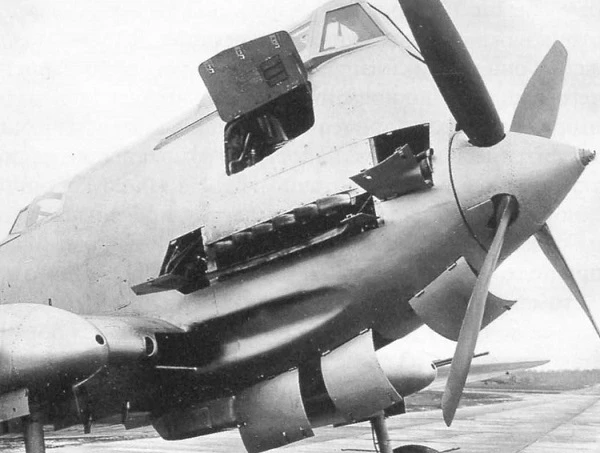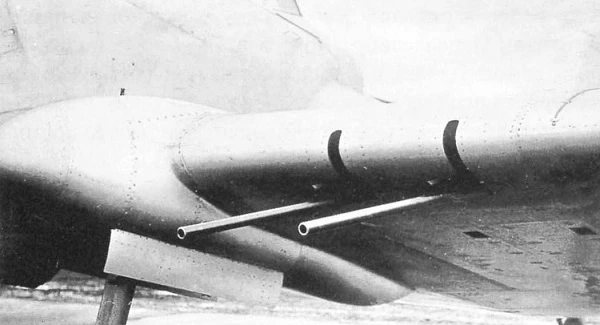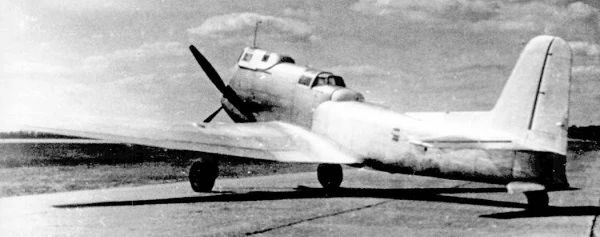The Ilyushin Il-20: Soviet Ground-Attack Prototype of 1948

The Ilyushin Il-20 was a Soviet prototype ground-attack aircraft developed in 1948 by the Ilyushin Design Bureau, intended as a replacement for the Il-10. It came out of a 1947 Soviet Air Force requirement for a new attack plane with better performance and firepower than the Il-10, which itself had evolved from the legendary Il-2 Shturmovik. The Il-2, with over 36,000 built, was the most-produced combat aircraft ever, a rugged beast that dominated the Eastern Front in World War II. The Il-10, introduced in 1945 with over 6,000 units, improved on speed and handling but was aging by the late 1940s as anti-aircraft threats grew more sophisticated. The Il-20 was Ilyushin’s attempt to keep the armoured ground-attack concept alive in a shifting postwar landscape.
The Il-20’s design stood out for its unusual layout. The pilot sat directly above the engine, looking over a four-bladed propeller, a setup meant to fix a flaw in the Il-2 and Il-10: poor downward visibility. Those earlier planes offered just an eight-degree downward view, hampered by the engine ahead of the cockpit. The Il-20’s high perch gave the pilot a 37-degree downward angle through a 100mm-thick armoured glass windscreen—much better for spotting targets during low-level runs. The airframe was a single-engine, all-metal, low-wing monoplane, built around a load-bearing armoured shell that protected the pilot, rear gunner, engine, fuel, and cooling systems. This armour, ranging from 6mm to 15mm thick, weighed 1,840 kg (4,060 lb), about a quarter of the plane’s 7,485 kg (16,500 lb) empty weight. That’s heavy, but it was designed to stop 12.7mm rounds and resist 20mm cannon fire—a nod to the increasing potency of ground defences.


Power came from the M-47 engine, also called the MF-45Sh or M-45Sh, a liquid-cooled V12 rated at 3,000 horsepower. This drove the big prop and, on paper, promised solid performance. The armament was hefty: four 23mm Shpitalnyy Sh-3 cannons in the wings, adjustable on the ground to fire either level or at a 23-degree downward angle for level-flight strafing. Early plans considered two additional fuselage-mounted 23mm guns fixed at 23 degrees downward, but these were dropped as too hard to aim. Another variant swapped in a 45mm cannon alongside two 23mm guns and six RS-132 rockets, though the prototype stuck with the four wing cannons, carrying 900 rounds total. Bomb load topped out at 1,190 kg (2,620 lb)—typically 400 kg (880 lb), with an overload capacity of 700 kg (1,540 lb)—or four RS-132 rockets. The rear gunner had a single 23mm Sh-3 in a remotely controlled Il-VU-11 turret, traversable 180 degrees and elevating to 80 degrees, plus a cassette of ten AG-2 aerial grenades for tail-chasing fighters.

The prototype was finished on November 27, 1948, and first flew on December 4, 1948, with test pilot Vladimir Kokkinaki at the controls. Testing ran into 1949, but the results were disappointing. Top speed was 515 km/h (320 mph) at 2,800 m (9,200 ft), slower than the Il-10’s 551 km/h (342 mph) at similar altitude. The high cockpit and armoured bulk added drag, and the M-47 engine was a mess—severe vibrations shook the airframe, making it unreliable and unpleasant to fly. Maintenance was a nightmare too; the cockpit placement blocked easy engine access. The fuel tank, wedged between pilot and gunner, raised fire risks, and the Air Force worried about the pilot bailing out so close to the prop—bent blades could smash the canopy in a crash landing. They also wanted six cannons, not four, and weren’t happy with the firepower compromise.

The timing couldn’t have been worse. Jets were taking over by 1948—the MiG-15, first flown in 1947, hit 1,046 km/h (650 mph), dwarfing the Il-20’s plodding pace. The Soviet Air Force saw the writing on the wall: piston-engine attack planes were on their way out. The Il-20 program was cancelled on May 14, 1949, after a few test flights showed it couldn’t compete. Only one prototype was built; its fate is unclear, likely scrapped as the USSR shifted focus to jet designs like the Il-40, a twin-jet ground-attack prototype that flew in 1953 but also stayed experimental.
The Il-20 wasn’t a total dead end. Its emphasis on armour and visibility influenced later Soviet thinking—look at the Su-25 Frogfoot, operational from 1981, with its titanium cockpit tub and low-level attack focus. But in 1948, it was a misstep. The jet age killed it, and the Korean War (1950-1953) proved jets like the F-86 and MiG-15 ruled the skies, while Il-2s and Il-10s still slogged it out on the ground-attack front. The Il-20’s oddball design earned it the nickname “Gorbach” (Hunchback) from test pilots, a fitting tag for a plane that looked and flew like it was carrying too much weight.
For comparison, the Il-10 it aimed to replace had a 2,300-hp AM-42 engine, a 12mm armour tub, and a top speed of 551 km/h (342 mph), with two 23mm cannons, two 7.62mm machine guns, and a 20mm rear turret. The Il-20 upped the armour and cannon count but sacrificed speed and reliability. Against Western contemporaries, like the U.S. AD Skyraider (first flown 1945, 583 km/h, 2,722 kg bomb load), it was outclassed in versatility and production scale (3,180 Skyraiders built). The Il-20’s single prototype status leaves it a curiosity—exact specs like range and service ceiling are spotty, with estimates around 1,000 km (621 mi) and 7,700 m (25,260 ft) based on Il-10 similarities and engine power, but unconfirmed in surviving records.
The Il-20 is a peek into Soviet postwar priorities: durability over speed, armour over agility. It didn’t work out, but it’s a solid footnote in the Ilyushin lineage, bridging the Shturmovik era to the jet-powered future.